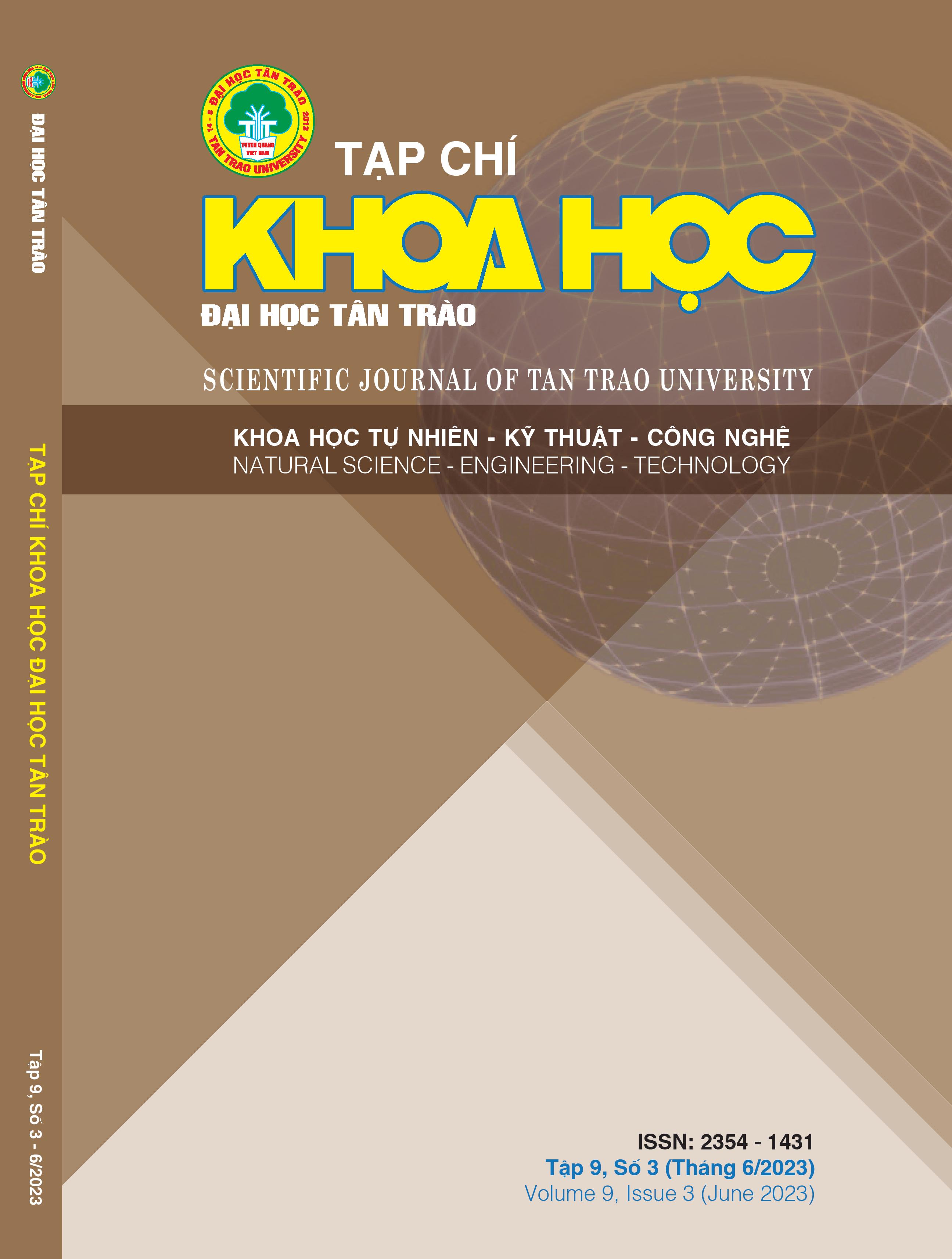SOME INFRASTRUCTURE PROCESSES IN THE INTERNET OF THINGS
DOI:
https://doi.org/10.51453/2354-1431/2023/961Keywords:
Internet of Things, Infrastructure Protocol, RPL, 6LowPAN, IEEE 802.15.4, BLE, EPCglobal, LTE-A, Z-Wave, Thread.Abstract
Internet of Things or IoT refers to billions of physical devices worldwide that are now connected to the internet, collecting and sharing data. Everything becomes more proactive and intelligent thanks to the internal processor and the wireless network. To be able to switch, route, handle multi-services, collect thousands of feature data, and so on, a protocol, language, and pathway are needed to create interconnected networks. This article will introduce some popular infrastructure protocols used in IoT networks standardized by international organizations: World Wide Web Consortium (W3C), Internet Engineering Task Force (IETF), EPCglobal, Institute of Electrical and Electronics Engineers (IEEE) and European Telecommunications Standards Institute (ETSI).
Downloads
References
[1] J. Vasseur et al., “RPL: The IP routing protocol designed for low power and lossy networks,” Internet Protocol for Smart Objects (IPSO) Alliance, San Jose, CA, USA, 2011.
[2] T. Winter et al., “RPL: IPv6 routing protocol for low-power and lossy networks,” Internet Eng. Task Force (IETF), Fremont, CA, USA, Request for Comments: 6550, 2012.
[3] T. Clausen, U. Herberg, and M. Philipp, “A critical evaluation of the IPv6 routing protocol for low power and lossy networks (RPL),” in Proc. IEEE 7th Int. Conf. WiMob, 2011, pp. 365–372.
[4] M. R. Palattella et al., “Standardized protocol stack for the Internet of (important) things,” IEEE Commun. Surveys Tuts., vol. 15, no. 3, pp. 1389–1406, 3rd Quart. 2013.
[5] IEEE Standard for Local and Metropolitan Area Networks—Part 15.4: Low-Rate Wireless Personal Area Networks (LR-WPANs), IEEE Std. 802. 15. 4-2011, 2011.
[6] R. Frank, W. Bronzi, G. Castignani, and T. Engel, “Bluetooth low energy: An alternative technology for VANET applications,” in Proc. 11th Annu. Conf. WONS, 2014, pp. 104–107.
[7] E. C. Jones and C. A. Chung, RFID and Auto-ID in Planning and Logistics: A Practical Guide for Military UID Applications. Boca Raton, FL, USA: CRC Press, 2011.
[8] M. Hasan, E. Hossain, and D. Niyato, “Random access for machineto-machine communication in LTE-Advanced networks: Issues and approaches,” IEEE Commun. Mag., vol. 51, no. 6, pp. 86–93,Jun. 2013.
[9] C. Gomez and J. Paradells, “Wireless home automation networks: A survey of architectures and technologies,” IEEE Commun. Mag., vol. 48, no. 6, pp. 92–101, Jun. 2010.
[10] Wojciech Rzepecki, Łukasz Iwanecki, Piotr RybaIEEE 802.15.4, “Thread Mesh Network – Data Transmission in Harsh Environment”, International Conference on Future Internet of Things and Cloud Workshops (FiCloudW), 6th 2018.
[11] N. Accettura, L. A. Grieco, G. Boggia, and P. Camarda, “Performance analysis of the RPL routing protocol,” in Proc. IEEE ICM, 2011, pp. 767–772.
[12] B. Cody-Kenny et al., “Performance evaluation of the 6LoWPAN protocol on MICAz and TelosB motes,” in Proc. 4th ACM Workshop Perform. Monitoring Meas. Heterogeneous Wireless Wired Netw., 2009, pp. 25–30.
[13] B. Enjian and Z. Xiaokui, “Performance evaluation of 6LoWPAN gateway used in actual network environment,” in Proc. ICCECT, 2012, pp. 1036–1039.
[14] M. Siekkinen, M. Hiienkari, J. K. Nurminen, and J. Nieminen, “How low energy is Bluetooth low energy? Comparative measurements with ZigBee/802.15.4,” in Proc. IEEE WCNCW, 2012, pp. 232–237.
[15] J. Y. Maina, M. H. Mickle, M. R. Lovell, and L. A. Schaefer, “Application of CDMA for anti-collision and increased read efficiency of multiple RFID tags,” J. Manuf. Syst., vol. 26, no. 1, pp. 37–43, Jan. 2007.
[16] E. Vahedi, R. K. Ward, and I. F. Blake, “Performance analysis of RFID protocols: CDMA versus the standard EPC Gen-2,” IEEE Trans. Autom. Sci. Eng., vol. 11, no. 4, pp. 1250–1261, Oct. 2014.
[17] C. Withanage, R. Ashok, C. Yuen, and K. Otto, “A comparison of the popular home automation technologies,” in Proc. IEEE ISGT Asia, 2014, pp. 600–605.
Downloads
Published
How to Cite
Issue
Section
License

This work is licensed under a Creative Commons Attribution-ShareAlike 4.0 International License.
All articles published in SJTTU are licensed under a Creative Commons Attribution-ShareAlike 4.0 International (CC BY-SA) license. This means anyone is free to copy, transform, or redistribute articles for any lawful purpose in any medium, provided they give appropriate attribution to the original author(s) and SJTTU, link to the license, indicate if changes were made, and redistribute any derivative work under the same license.
Copyright on articles is retained by the respective author(s), without restrictions. A non-exclusive license is granted to SJTTU to publish the article and identify itself as its original publisher, along with the commercial right to include the article in a hardcopy issue for sale to libraries and individuals.
Although the conditions of the CC BY-SA license don't apply to authors (as the copyright holder of your article, you have no restrictions on your rights), by submitting to SJTTU, authors recognize the rights of readers, and must grant any third party the right to use their article to the extent provided by the license.


